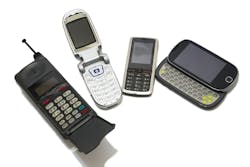When I was in high school in a suburb of Nashville, Tennessee, I remember a discussion in math class about politicians in our state who had tried once to pass a law making the mathematical constant pi (p) equal to an even number, 3, which we all thought hilarious. Later in life, I heard the same story ascribed also to the states of Indiana, Oklahoma, Kansas, and Ohio.
You probably remember from high school geometry that pi (p) is the ratio of the circumference of a circle to its diameter, about 3-1/7 or 3.14. It is also an irrational number; no matter how many digits beyond the usual abbreviation of 3.14 you calculate, it’s never exact.1
Trying to force pi to be 3 would not last long. In the era that the law was supposedly proposed, it would have been a problem for people making wagon wheels and gears for machinery, for instance. Legislating mathematical constants in a state legislature can give us all a chuckle.
But sometimes, these attempts at legislation can be more than just humorous. For example, one state senator called the Internet, “just a bunch of tubes.” Other state legislators in Ohio recently attached a provision to the state budget bill, HB 23, which would limit future state broadband funding to fiber optic projects only. Whose lobbyist came up with this crazy idea? What politicians agreed to it? Having a state law allowing only fiber optics, effectively banning broadband funding for wireless, would probably shut down most broadband projects.
“The point that needs to be made to legislators (and lobbyists and maybe broadband officials) is that ‘one size does not fit all.’ A functional broadband system should have both fiber and wireless available. And most of the time they can share a fiber backbone in an open access system.”
Since the allocation of the $43 billion in broadband funding has been announced, it seems a lot of people are taking leave of their senses.
There is no single solution to broadband any more than there is any single solution for telecommunications. Copper, fiber and wireless—all with their many variations—are needed to create a telecom network. How it’s done keeps changing as technology evolves.
When I first started using the Internet in the late 1980s, I used dial-up phone lines at the office and the home. When we needed more bandwidth at the office, we had a T1 line on 50-year-old copper twisted pair wires. In February of 1997, I got one of the first cable modems on our home CATV coax, after helping run early field trials in my kids’ school system. When Verizon came to FOA for help in 2006 for starting FiOS, FTTH finally took off.
My first cell phone was a brick, evolved into a flip phone, that was just for voice calls and eventually some texting. When the iPhone came out in 2007, we could finally access the Internet from a mobile device and since then it’s been nonstop wireless bandwidth growth. By 1999, data traffic had exceeded voice traffic and since then has grown astronomically.
Today, wherever you are, you expect broadband. At home or in the office, most people have a landline Internet connection, with many businesses and homes now connected on fiber. Cellular service providers are also offering 5G home connections, touting the high-speed capability of 5G. Odds are that most of your devices connect wirelessly, mostly using Wi-Fi indoors and cellular outdoors.
In rural areas, it’s not uncommon to have fiber running along roads and line-of-sight Wi-Fi connecting homes. Along many of the same roads are cellular antennas connected on fiber. This is all a way of providing broadband—fixed and mobile—to more people.
Even in cities, line-of-sight Wi-Fi can be used where installing fiber is difficult or to provide a solution until fiber can be installed. It is often used as a solution for connecting buildings from roof-to-roof to prevent having to install expensive private fiber optic circuits.
Cellular and Wi-Fi are not even the only wireless solutions. Satellites are also an option. At one point, when we were living on a farm in a rural town in California, we had DSL, cable modem, satellite, and cellular Internet connections. We needed reliability, so we had all of them to ensure we had 100% coverage. It also allowed us to compare the services.
The fastest, most reliable service on the farm was VIASAT satellite. The downside was it had usage limits, so it was not good for streaming video, but it was always available and fast when the others were slow and often unreliable—like during the rainy season! VIASAT is a very large satellite in a geostationary orbit, like TV satellites. The latest versions are the first “terabit” satellites, offering high bandwidth capabilities to rural areas.
The other types of satellites that have been in the news are low earth satellites like the Starlink satellites from SpaceX. These small satellites whiz by overhead requiring connections that pass from one satellite to another to provide coverage. Some of these new satellites can connect to regular cell phones also.
Of course, satellites depend on fiber optic ground networks. The connection to the satellite from the ground is wireless, but then they must also be connected into ground-based networks to access the world’s telecom networks and the Internet. VIASAT has a network of around 100 ground stations to connect their satellites. Starlink probably needs many more to cover their fast-moving satellites.
What’s common about all these wireless options? All wireless systems are wireless only from the customer device to the antenna, then they are connected into the telecom network on fiber.
We all agree that fiber-to-the-home (FTTH) provides the highest broadband bandwidth but building a FTTH network often cost more and takes longer to build. Wireless networks can often be deployed quicker and provide service immediately, even if it is just an interim solution as FTTH gets built. And maybe it’s good enough for a long-term solution.
The point that needs to be made to legislators (and lobbyists and maybe broadband officials) is that “one size does not fit all.” A functional broadband system should have both fiber and wireless available. And most of the time they can share a fiber backbone in an open access system.
REFERENCES AND NOTES
1. To 39 decimal places, pi=3.141592653589793238462643383279502884197. The value has been calculated to trillions of digits!
About the Author
Jim Hayes
Fiber Optic Expert
Jim Hayes is the Fiber Optic Expert columnist for ISE Magazine. He is a lifelong techie who has been involved in the fiber optic industry since the late 1970s. He founded one of the world's first fiber optic test equipment companies, FOTEC, which was acquired by Fluke in 2000, and he was a co-founder of the Fiber Optic Association (FOA), the international professional society of fiber optics, in 1995.
Jim is a writer and trainer and the President of FOA. He is the author of nine books on fiber optics and cabling and writes for several magazines.
Jim and his wife, Karen, who is the GM of the FOA, have traveled the world for the FOA helping set up schools to train the workers who design, build, and operate today's communications networks. The FOA offers nearly 1,000 pages of online technical materials, over 100 videos, and two dozen free self-study courses online.
For more information, email [email protected] or visit www.jimhayes.com.
To learn more about The Fiber Optic Association, visit www.thefoa.org. Follow them on Facebook: FiberOpticAssociation, LinkedIn: company/the-fiber-optic-association-inc-foa, and YouTube: user/thefoainc.


